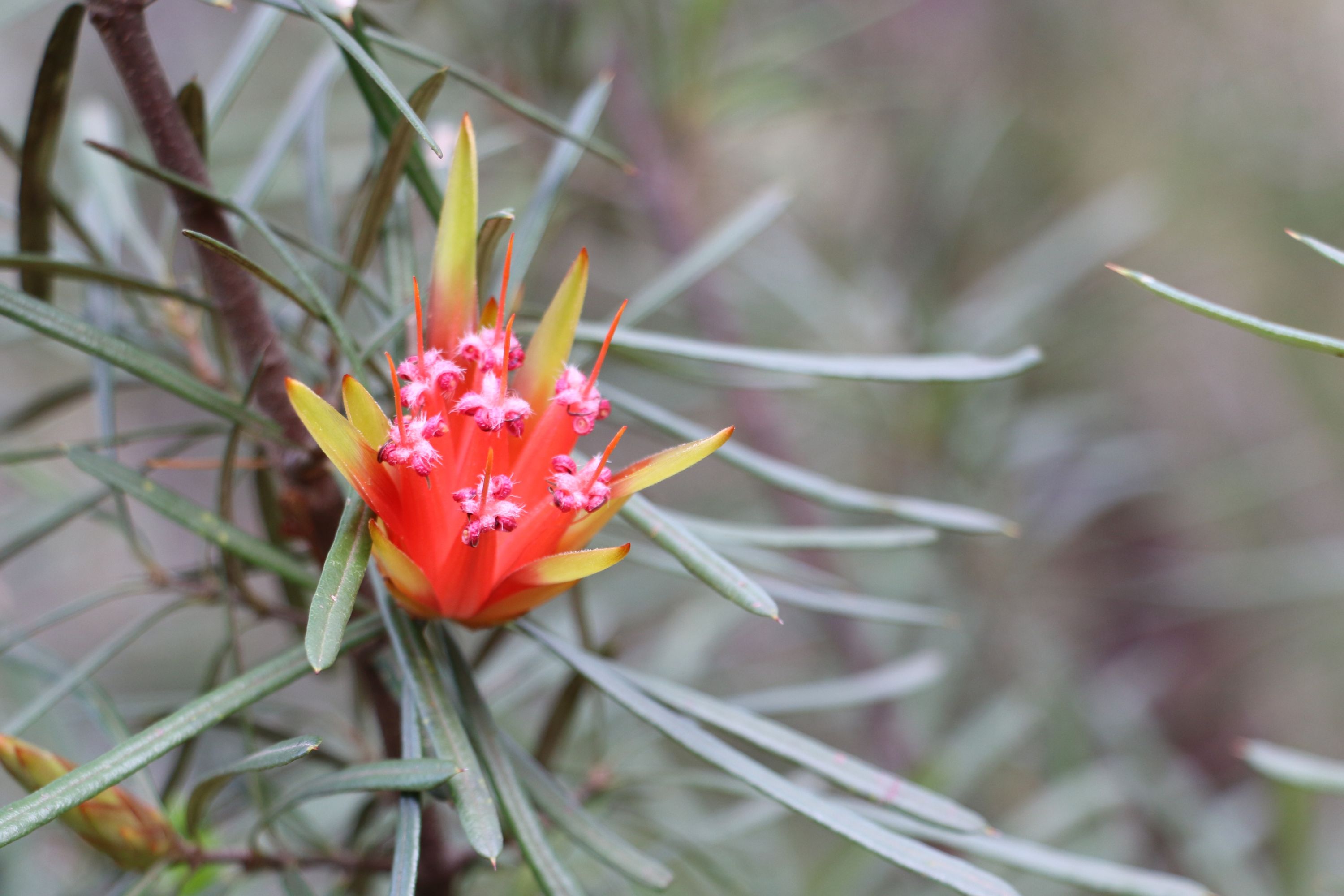Mountain devil
(Lambertia formosa)

Description
Lambertia formosa, commonly known as mountain devil, is a shrub of the family Proteaceae, endemic to New South Wales, Australia. First described in 1798 by English botanist James Edward Smith, it is the type species of the small genus Lambertia. It is generally found in heathland or open forest, growing in sandstone-based soils. It grows as a multistemmed shrub to around 2 m (7 ft) with a woody base known as a lignotuber, from which it regrows after bushfire. It has stiff narrow leaves, and the pink to red flowerheads, made up of seven individual tubular flowers, generally appear in spring and summer. It gains its common name from the horned woody follicles, which were used to make small devil-figures. The flowers hold profuse amounts of nectar and are pollinated by honeyeaters. Although L. formosa is uncommon in cultivation, it is straightforward to grow in soils with good drainage and a partly shaded to sunny aspect. It is readily propagated by seed. Unlike all other members of the genus Lambertia, L. formosa is greatly resistant to the soil pathogen Phytophthora cinnamomi. Lambertia formosa grows as a spreading shrub to 2 m (7 ft) tall, with one or more stems arising from a woody base known as a lignotuber. The new growth is covered with a fine brownish hair. The stiff leaves are arranged in whorls of 3, or sometimes up to 4 to 6, on the stems, and are linear to narrow-oblanceolate in shape. Measuring anywhere from 1 to 8 cm (0.4–3 in) in length and 0.2–0.7 cm wide, they have a pointed tip or apex. Flowers are seen at any time of the year, but more often over spring and summer (September to January).Their bases are covered by greenish and reddish bracts. The inflorescences are almost always made up of seven smaller individual flowers (less than 1% of flowerheads have either six or eight flowers), known as florets, and can be shades of red or pink in colour. The tubular perianths are 4.5 cm (1.6 in) long, with the styles protruding another 1–1.5 cm (0.5 in) beyond. Flowering is followed by the development of woody fruit which measure 2–3 by 1–2 cm. They have two 1–1.5 cm sharp horny protuberances, and a 0.5 cm 'beak', initially pale green in colour before fading to a grey-brown. These woody follicles each have two flat, winged seeds that are retained until burnt by fire.
Taxonomic tree:







